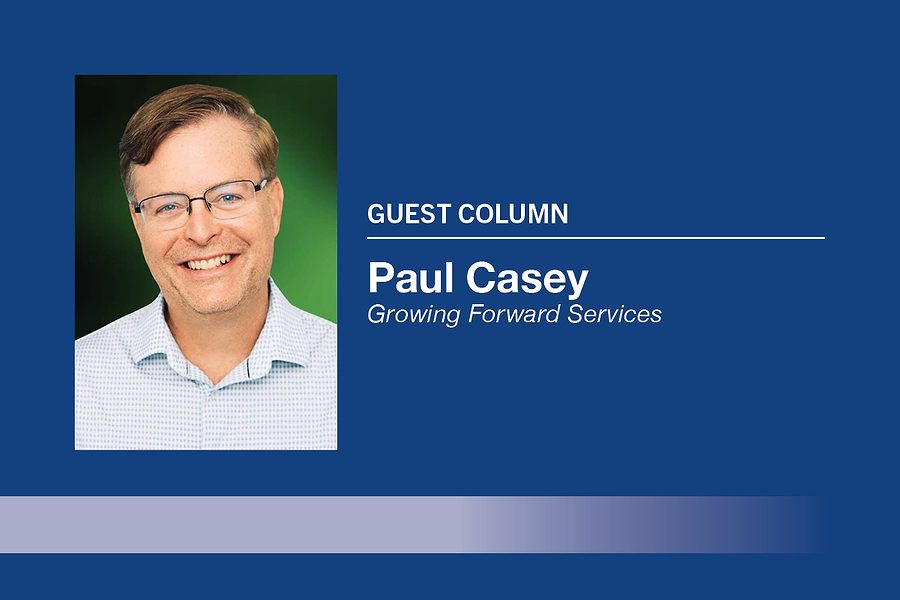
Home » Build a blueprint for a strong company culture
Build a blueprint for a strong company culture

January 16, 2025
One of my favorite things to do when I gear up for a new year is to establish personal objectives or goals. The same goes for my company. Putting my objectives in writing is critical to success. When I consider what I want to accomplish, I always go back to my mission statement.
Do my objectives support the mission statement and promote a positive company culture?
A good company culture is more than just a nice place to work – it’s a thriving entity where every individual is united by a shared purpose, vision and set of core values.
These elements form the backbone of an organization and are essential in shaping decisions, guiding actions and fostering growth. They work in tandem to create an environment where employees feel motivated, engaged and aligned with the company’s objectives. In short, they become the guiding principles that help everyone move in the same direction.
At the core of any strong company culture is a solid foundation of mission, vision and values. These aren’t just buzzwords or abstract concepts. When they are a part of daily operations, they have the power to influence everything from decision-making processes to employee satisfaction.
The north star
Mission is the “why” behind everything a company does. It defines the company’s purpose – why it exists, what it aims to achieve, and who it is striving to serve. It acts as a north star guiding the organization toward its goals. Employees who understand and are aligned with the mission feel that their work is meaningful and are more likely to be motivated and passionate about their contributions.
Vision is the “where” the company is going. It paints a picture of the future and provides a roadmap for the organization’s growth. A clear, compelling vision helps employees see the bigger picture and understand how their roles contribute to long-term success. This sense of direction is crucial for creating a motivated and cohesive workforce, especially during times of change or uncertainty.
Values are the “how” of the organization – the guiding principles that shape behavior and decision-making. Values set the standard for what is important within the company, from how employees treat each other to how they engage with customers. When everyone within the organization shares the same values, it creates an environment where everyone knows what’s expected, and there’s a sense of unity that drives the company forward.
When these three guiding principles are clear, they serve as the compass for navigating daily decisions and actions. Every decision, from strategic moves to day-to-day tasks, can be measured against them. Employees who understand the company’s mission can make decisions that align with its core purpose, whether it’s choosing a new product to develop or how to engage with a customer.
A strong culture, rooted in shared values, also empowers employees to act autonomously while still maintaining alignment with the company’s larger objectives. They don’t need to ask permission for every little decision because they already understand what aligns with the company’s mission and values. This sense of autonomy fosters creativity, innovation and a sense of ownership over the company’s success.
A company with a well-defined mission provides its employees with a sense of purpose that motivates them beyond their paycheck. Purpose is a powerful force that drives engagement, job satisfaction and loyalty. When employees feel that their work contributes to something meaningful, they are more likely to go above and beyond in their roles.
Working with a sense of purpose doesn’t just benefit the employees; it also fuels the company’s growth. When people are driven by a common goal, it sparks a sense of unity, collaboration and a shared belief that they are contributing to something larger than themselves.
A shared vision
A company’s vision is like the GPS for the organization – without it, you’re just driving around aimlessly, hoping to stumble upon success (spoiler: you won’t). When this vision is clearly communicated, it’s like handing everyone a map, and suddenly, everyone’s on the same route heading in the same direction.
It’s crucial for employees to see how their individual tasks fit into the grand picture. It’s like being part of a giant jigsaw puzzle – every little piece matters. When employees understand their small actions contribute to the big vision, they feel like they’re not just doing a mindless task. Instead, they feel like an integral part of the task.
Collective energy
When employees rally behind a shared mission, incredible things happen. The collective energy of the team becomes a powerful driving force that propels the company forward. Employees who are united by a common mission are more likely to engage in teamwork, support each other and push through challenges together.
For example, during times of crisis or change, companies with strong missions and values can maintain stability and focus. Employees are less likely to become distracted by external noise or changes in the market because they understand that their mission provides direction. This shared sense of purpose can act as a stabilizing force, helping the company weather storms and stay true to its values.
A culture blueprint
A company’s mission, vision and values are like the blueprint for the culture. Leaders are the ones who need to walk the walk. If leadership isn’t living the company values, employees might start thinking the mission is just something on a PowerPoint slide that’s never seen in real life.
Leaders should model the behavior they want to see, kind of like how a good parent teaches kids by example. Leaders need to show the employees what the guiding principles look like in action.
And communication? Oh boy, that’s where the magic happens. Leaders have to be like the town crier, making sure everyone knows the company’s mission and vision. This isn’t just about the “all-staff emails” that nobody reads. It’s about bringing these principles into performance reviews, and decision-making. You don’t want your company values to be like that one New Year’s resolution –promising and well-intentioned but forgotten by February. Leaders need to hammer the message home until it becomes a natural and “the way we do things around here” because a company’s culture is the most powerful force that can influence its success.
Paul D. Casey lives in the Tri-Cities and is the owner of Growing Forward Services, which aims to equip and coach leaders and teams to spark breakthrough success.
Latest News Leadership Development Opinion
Related Articles
Related Products




